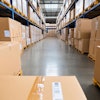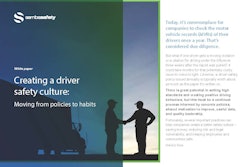
It has often been said that the reward for good work is more work. That is exactly the kind of fortunate challenge that Delicato Family Vineyards knows well. The California-based maker of award-winning wines has performed so well at its craft that the winemaker has grown rapidly in recent years.
While fast growth is what every business aspires to, it also comes with significant challenges. One major hurdle is processing orders quickly and accurately so that both existing and new customers deepen their loyalty to the winemaker. In the past, Delicato—like many other food and beverage companies—took a manual approach to processing orders, one that required company employees to enter orders into SAP.
Delicato quickly realized that this manual approach to order processing would never be able to keep up with growing demand for the company’s wines in a way that kept customers happy. It even threatened to harm the company’s hard-earned brand by injecting too much time and too many errors into the delivery of products to customers.
The realization that Delicato came to is hardly unusual among food and beverage companies. Because order processing is a critical link in the supply chain that brings products from manufacturers to customers, it has been an area of focus for executives and operators seeking to improve efficiency, reduce cost and elevate customer satisfaction.
And it’s not just the importance of order processing that has made it a topic of interest in the food and beverage industry. The challenges and inefficiencies of a manual approach also make it a prime target for improvement. Indeed, relying on people to enter orders received by fax or email into SAP, as Delicato did, is not just time-consuming and prone to errors, it also has an opportunity cost.
The time company employees spend completing these manual tasks are hours they can’t devote to providing individualized, superior customer service. There’s plenty of evidence that this can have a meaningful impact on a company’s financial performance and competitive position. In fact, a report by the Service Council found that 60 percent of companies worldwide believe that customer service is the top source of competitive differentiation.
Other downsides of manual order processing include a lack of visibility that often extends across the supply chain. This can be a problem when it comes to tracking orders to respond to a customer inquiry. It also can be an issue in the case of a food or beverage recall, when transparency about each step of the journey food and drinks take on the way to store shelves needs to be documented and known. Accurate order processes are also critically important in the food and beverage industry, because mistakes can lead to products spoiling before reaching consumers.
Fortunately, automation is quickly transforming sales order processing in the food and beverage industry. How? At its core, the benefit of automation is that it removes the inconsistency, errors and extra time that are inevitable when people must complete large volumes of repetitive and mundane tasks. After all, people are people; they’re bound to get tired or distracted and make mistakes that can lead to delays or errors in the delivery of orders.
By contrast, order process automation taps the power of artificial intelligence (AI) and machine learning to improve consistency, elevate visibility and improve the customer’s experience. AI and machine learning are able to get better and better at the tasks they perform as they recognize patterns and pinpoint possible improvements.
Delicato has experienced firsthand the benefits of moving from a manual order processing approach to one that utilizes AI and machine learning. Since the vineyard implemented an automated solution in 2016, it has transitioned to the point where 95 percent of all orders are processed electronically. In the past, it took a quarter of an hour to process an order; today, it is down to 5 or 6 minutes.
This increased speed due to automation has led to order processing times that are 60 percent faster. It also has eliminated much of the time Delicato employees used to devote to data entry, freeing them up to develop new products, serve customers and other activities that will drive demand for the company’s wine.
Of course, it’s a virtuous circle that will only make order process automation even more important in the future. The reward for good work really is more work.




















